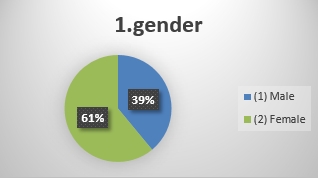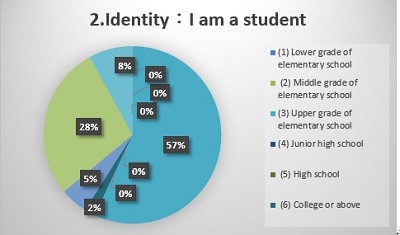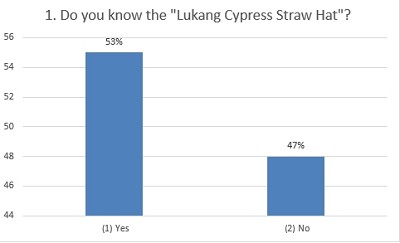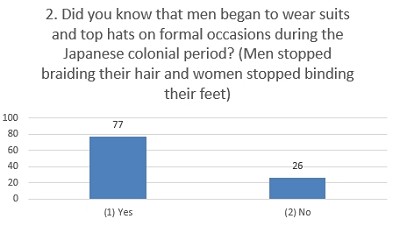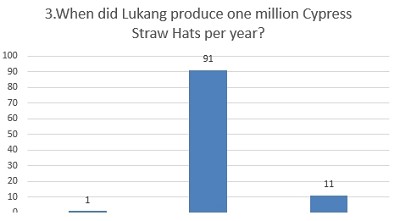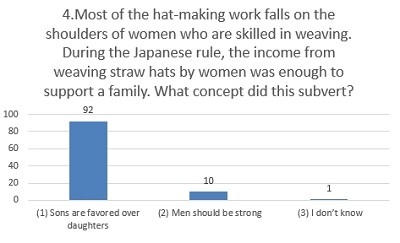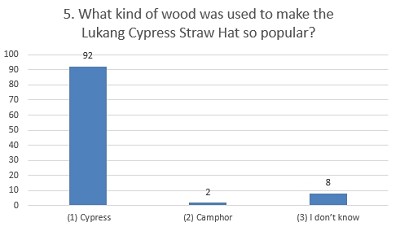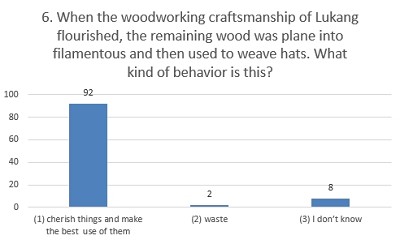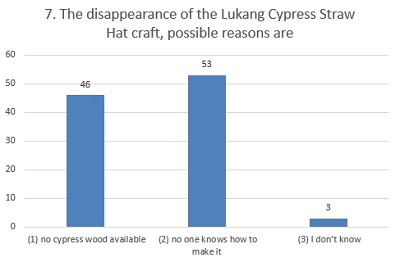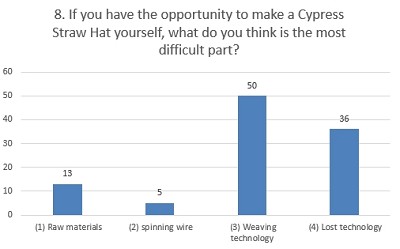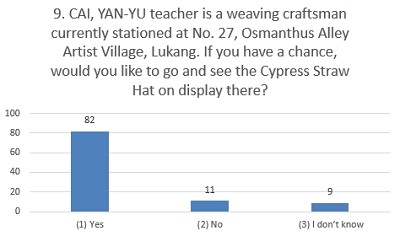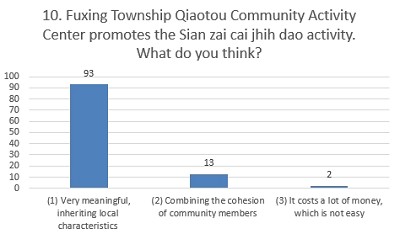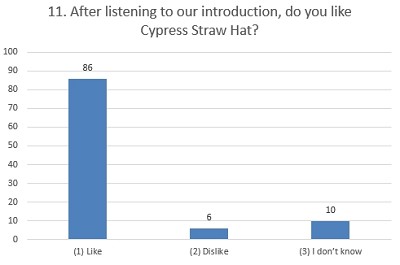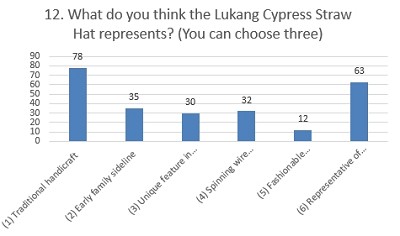
- Part1
- Part2
- Part3
- Part4
• Gender □Male □Female
|
||||||||||||||||
• Identity:I am a student: □Lower grade of elementary school □Middle grade of elementary school □Upper grade of elementary school □Junior high school □High school □College or above
• Identity:I'm not a student: □19~30 years old □31~50 years old □51~70 years old □70 years old or above
|
||||||||||||||||
• 1. Do you know the "Lukang Cypress Straw Hat"? □Yes □No
|
||||||||||||||||
• 2. Did you know that men began to wear suits and top hats on formal occasions during the Japanese colonial period? (Men stopped braiding their hair and women stopped binding their feet) □Yes □No
|
||||||||||||||||
• 3. When did Lukang produce one million Cypress Straw Hats per year? □Qing Dynasty □Japanese rule □Republic of China
|
||||||||||||||||
• 4.Most of the hat-making work falls on the shoulders of women who are skilled in weaving. During the Japanese rule, the income from weaving straw hats by women was enough to support a family. What concept did this subvert? □Sons are favored over daughters □Men should be strong □I don’t know
|
||||||||||||||||
• 5.What kind of wood was used to make the Lukang Cypress Straw Hat so popular? □Cypress □Camphor □I don’t know
|
||||||||||||||||
• 6.When the woodworking craftsmanship of Lukang flourished, the remaining wood was plane into filamentous and then used to weave hats. What kind of behavior is this? □cherish things and make the best use of them □waste □I don’t know
|
||||||||||||||||
• 7.The disappearance of the Lukang Cypress Straw Hat craft, possible reasons are □no cypress wood available □no one knows how to make it □ I don’t know
|
||||||||||||||||
• 8. If you have the opportunity to make a Cypress Straw Hat yourself, what do you think is the most difficult part? □ Raw materials □spinning wire □Weaving technology □Lost technology
|
||||||||||||||||
• 9.CAI, YAN-YU teacher is a weaving craftsman currently stationed at No. 27, Osmanthus Alley Artist Village, Lukang. If you have a chance, would you like to go and see the Cypress Straw Hat on display there? □Yes □No □ I don’t know
|
||||||||||||||||
• 10.Fuxing Township Qiaotou Community Activity Center promotes the Sian zai cai jhih dao activity. What do you think? □Very meaningful, inheriting local characteristics □Combining the cohesion of community members □It costs a lot of money, which is not easy
|
||||||||||||||||
• 11.After listening to our introduction, do you like Cypress Straw Hat? □Like □Dislike □I don’t know
|
||||||||||||||||
• 12.What do you think the Lukang Cypress Straw Hat represents? (You can choose three)? □Traditional handicraft □Early family sideline □Unique feature in Taiwan □Spinning wire professional technology □ Fashionable production place during the Japanese colonial era □Representative of Lukang tradition
|
||||||||||||||||

